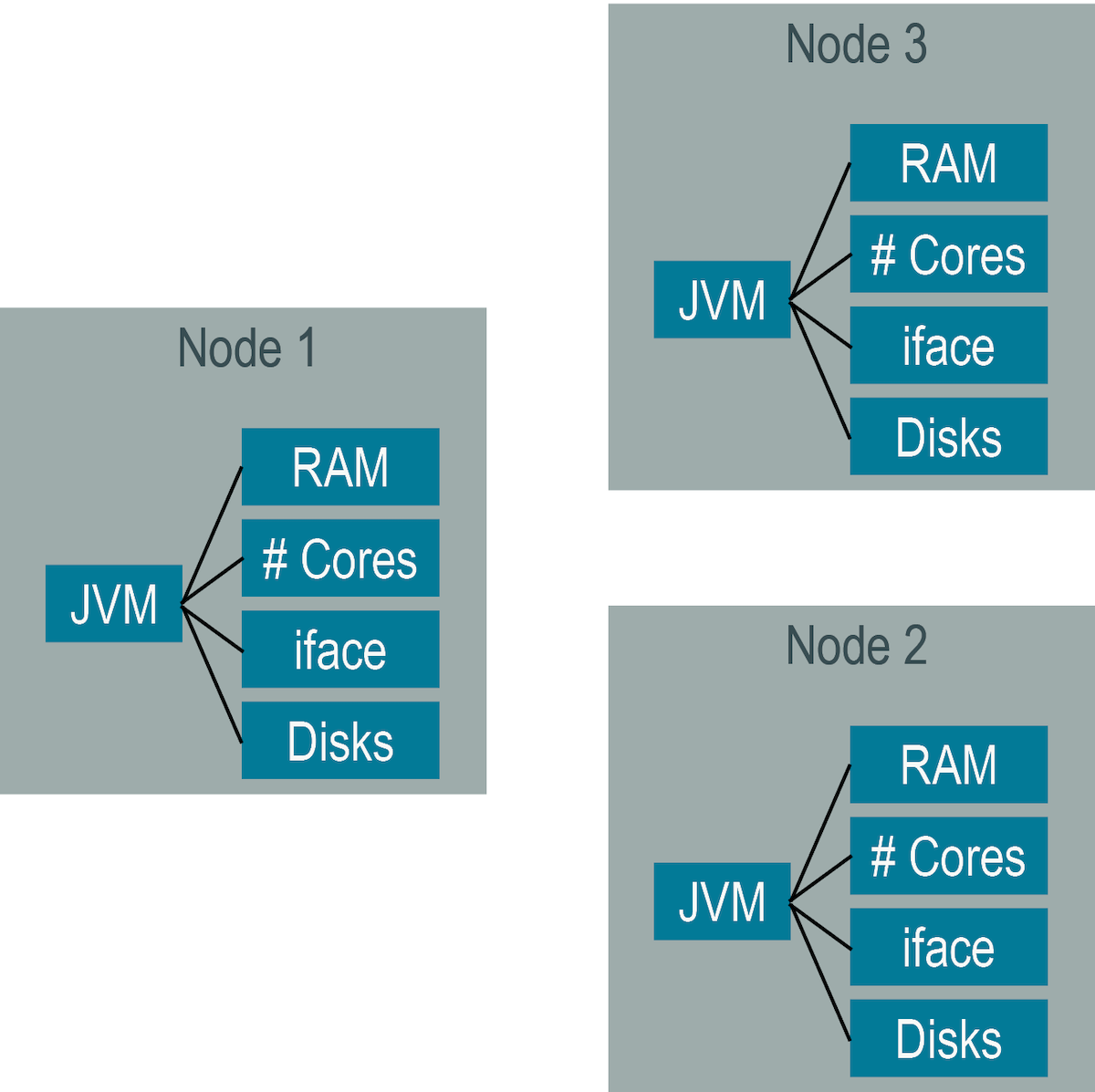DSE Multi-Instance architecture
DSE Multi-Instance enables multiple DataStax Enterprise nodes to exist on a single physical server.
To achieve the best performance, DataStax recommends:
-
All DSE Multi-Instance nodes on a single physical host share the same database rack to avoid replica placement problems.
If you are not using the rack feature, you must configure racks manually to ensure that the DSE Multi-Instance nodes on the same host machine do not encounter replica placement problems.
-
Ensuring that DSE Multi-instance nodes do not share a single physical disk.
For example, for two DSE Multi-Instance nodes do not configure a server with a single disk. Instead, configure the server with at least two disks so that each node can have its own exclusive storage device.
DataStax Enterprise is installed in a single location on the host machine with:
-
Multiple JVMs.
-
Each JVM runs one DataStax Enterprise node.
-
Each DataStax Enterprise node has a node-specific set of configuration files, with one directory per service. See default file locations for package installations.
The following image shows three DataStax Enterprise nodes on a single host machine.

